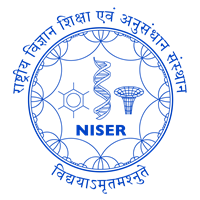

Associate Professor
manjushaniser.ac.in
+91-674-2494000 > 2195

Academic Publications
Palo A, Patel SA, Shubhanjali S, Dixit M. Dynamic interplay of Sp1, YY1, and DUX4 in regulating FRG1 transcription with intricate balance. Biochim Biophys Acta Mol Basis Dis. 2025 Mar;1871(3):167636. doi: 10.1016/j.bbadis.2024.167636. Epub 2024 Dec 19. PMID: 39708975.
Jena CK, Patnaik A, Nayak SS, Kumari S, Panda A, Dixit M, Sharma NK. PIDA-mediated synthesis of kynurenine derivatives by oxidative fragmentation of the tryptophan scaffold. Org Biomol Chem. 2025 Mar 26;23(13):3208-3223. doi: 10.1039/d5ob00057b. PMID: 40062636.
Shubhanjali, S., Mohapatra, T., Khan, R.. Dixit M. Unveiling FRG1’s DNA repair role in breast cancer. Sci Rep, 2024 Aug; 14, 19371. https://doi.org/10.1038/s41598-024-70368-9
Jeeyar V, Prasad Singh S, Dixit M. Functional relevance of MMP2 promoter variants in gallbladder cancer: A case-control study in an Eastern Indian Population. Gene. 2024;913:148372. doi:10.1016/j.gene.2024.148372
Patel SA, Hassan MK, Naik M, Mohapatra N, Balan P, Korrapati PS, Dixit M. EEF1A2 promotes HIF1A mediated breast cancer angiogenesis in normoxia and participates in a positive feedback loop with HIF1A in hypoxia. Br J Cancer. 2024 Feb;130(2):184-200. doi:10.1038/s41416-023-02509-2
Patel SA, Hassan MK, Dixit M. Oncogenic activation of EEF1A2 expression: a journey from a putative to an established oncogene. Cell Mol Biol Lett. 2024;29(1):6. Published 2024 Jan 3. doi:10.1186/s11658-023-00519-9
Subhashree S Panda, Supriya Kumari, Manjusha Dixit, Nagendra K Sharma. N-Salicyl-AAn-picolamide Foldameric Peptides Exhibit Quorum Sensing Inhibition of Pseudomonas aeruginosa (PA14). ACS Omega 2023, 8, 33, 30349–30358. Publication Date: August 8, 2023. https://pubs.acs.org/doi/full/10.1021/acsomega.3c03404
Vinay J., A Palo, K Besra, M Dixit. Gallbladder cancer-associated genetic variants rs1003349 and rs1004030 regulate MMP14 expression by altering SOX10-and MYB-binding sites. Human Molecular Genetics, Volume 32, Issue 14, 15 July 2023, Pages 2357–2372. doi.org/10.1093/hmg/ddad077
B Mukherjee, P Brahma, T Mohapatra, S Chawla, M Dixit. Reduced FRG1 expression promotes angiogenesis via activation of the FGF2â€mediated ERK/AKT pathway. FEBS Open Bio, 2023, 13, 5, 804-817. (https://doi.org/10.1002/2211-5463.13582)
Ananya Palo, Saket Awadhesbhai Patel, Bibekananda Sahoo, Tirumala Kumar Chowdary, Manjusha Dixit. FRG1 is a direct transcriptional regulator of nonsense-mediated mRNA decay genes. Genomics, 2023,115,1,110539.
Dixit, M., J, V., Choudhury, S. (2023). Targeted Therapies in Gallbladder Cancer: Current Status and Future Perspectives. In: Kumar Shukla, V., Pandey, M., Dixit, R. (eds) Gallbladder Cancer. Springer, Singapore. https://doi.org/10.1007/978-981-19-6442-8_16
BB Palai, SA Patel, NK Sharma, M Dixit. One-pot synthesis of cyclic-aminotropiminium carboxylate derivatives with DNA binding and anticancer properties. Communications Chemistry, 2022, 5 (1), 179
T Mohapatra, M Dixit. IQ Motif Containing GTPase Activating Proteins (IQGAPs), A-Kinase Anchoring Proteins (AKAPs) and Kinase Suppressor of Ras Proteins (KSRs) in Scaffolding Oncogenic Pathways and Their Therapeutic Potential. ACS Omega, 2022, 7, 50, 45837–45848. (Invited)
B Mukherjee, A Tiwari, A Palo, N Pattnaik, S Samantara, M Dixit. Reduced expression of FRG1 facilitates breast cancer progression via GM-CSF/MEK-ERK axis by abating FRG1 mediated transcriptional repression of GM-CSF. Cell Death Discovery, 2022, 8 (1), 1-14
S Meher, S Kumari, M Dixit, NK Sharma. Cuâ€Catalyzed Synthesis of Alkylaminotroponyl Sulfones as Pseudomonas Aeruginosa Quorum Sensing Inhibitors Targeting lasI/R QS Circuitry. Chemistry–An Asian Journal, 2022, 17 (23), e202200866. (Co-corresponding author)
B Bhusana Palai, S Kumari, M Dixit, NK Sharma. Nonbenzenoid BODIPY Analogues: Synthesis, Structural Organization, Photophysical Studies, and Cell Internalization of Biocompatible N-Alkyl-Aminotroponyl Difluoroboron. ACS omega, 2022, 7 (31), 27347-27358
D Kumar, SA Patel, R Khan, S Chawla, N Mohapatra, M Dixit. IQ motif-containing GTPase-activating protein 2 inhibits breast cancer angiogenesis by suppressing VEGFR2-AKT signalling. Molecular Cancer Research, 2022, 20 (1): 77–91
KK Sinha, J Vinay, S Parida, SP Singh, M Dixit. Association and Functional Significance of Genetic Variants Present in Regulatory Elements of SERPINB5 Gene in Gallbladder Cancer. Gene, 2022, 188: 1145989
Khan, R., Palo, A. & Dixit, M. Role of FRG1 in predicting the overall survivability in cancers using multivariate based optimal model. Sci Rep, 2021, 11, 22505
D Kumar, SA Patel, MK Hassan, N Mohapatra, N Pattanaik, M Dixit. Reduced IQGAP2 expression promotes EMT and inhibits apoptosis by modulating the MEK-ERK and p38 signaling in breast cancer irrespective of ER status. Cell death & disease, 2021, 12 (4), 1-14
J Vinay, Debakanta Mishra, Dinesh Meher, Sashibhusan Dash, Kusumbati Besra, Niharika Pattnaik, Shivaram Prasad Singh, Manjusha Dixit. Genetic association of MMP14 promoter variants and their functional significance in gallbladder cancer pathogenesis. Journal of Human Genetics, 2021, 1-10
B Mahananda, J Vinay, A Palo, A Singh, SK Sahu, SP Singh, M Dixit. SERPINB5 Genetic Variants rs2289519 and rs2289521 are Significantly Associated with Gallbladder Cancer Risk. DNA and cell biology, 2021, 40 (5), 706-712
A Bollu, MK Hassan, M Dixit, NK Sharma. The 2′-caged-tethered-siRNA shows light-dependent temporal controlled RNAi activity for GFP gene into HEK293T cells. Bioorganic & Medicinal Chemistry, 2021, 30, 115932
MK Hassan, D Kumar, SA Patel, M Dixit. EEF1A2 triggers stronger ERK mediated metastatic program in ER negative breast cancer cells than in ER positive cells. Life Sciences, 2020, 262, 118553
Hassan MK, Kumar D, Patel SA, Pattanaik N, Mohapatra N, Dixit M. Expression pattern of EEF1A2 in brain tumors: Histological analysis and functional role as a promoter of EMT. Life Sci. 2020, Apr 1;246:117399. doi: 10.1016/j.lfs.2020.117399. Epub 2020 Feb 4. PubMed PMID: 32032648.
Tiwari A, Mukherjee B, Hassan MK, Pattanaik N, Jaiswal AM, Dixit M. Reduced FRG1 expression promotes prostate cancer progression and affects prostate cancer cell migration and invasion. BMC Cancer. 2019;19(1):346.
Naik, M.; Brahma, P.; Dixit, M. A Cost-Effective and Efficient Chick Ex-Ovo CAM Assay Protocol to Assess Angiogenesis. Methods Protoc. 2018, 1, 19.
Hassan MK, Kumar D, Naik M, Dixit M. The expression profile and prognostic significance of eukaryotic translation elongation factors in different cancers. PLoS One. 2018 Jan 17;13(1):e0191377. doi: 10.1371/journal.pone.0191377.
Kumar D, Hassan MK, Pattnaik N, Mohapatra N, Dixit M. Reduced expression of IQGAP2 and higher expression of IQGAP3 correlates with poor prognosis in cancers. PLoS One. 2017 Oct 26;12(10): e0186977. doi: 10.1371/journal.pone.0186977.
Tiwari A, Mukherjee B, Dixit M. MicroRNA Key to Angiogenesis Regulation: miRNA Biology and Therapy. Curr Cancer Drug Targets. 2017 Jun 30. doi: 10.2174/1568009617666170630142725. PubMed PMID: 28669338.
Tiwari A, Pattnaik N, Mohanty Jaiswal A, Dixit M. Increased FSHD region gene1 expression reduces in vitro cell migration, invasion, and angiogenesis, ex vivo supported by reduced expression in tumors. Biosci Rep. 2017 Oct 27;37(5). pii: BSR20171062. doi: 10.1042/BSR20171062.
Arman Kunwar Hansda, Ankit Tiwari, Manjusha Dixit. Current Status and Future Prospect of FSHD Region Gene 1. J Biosci. 2017 Jun;42(2):345-353.
Gade CR, Dixit M, Sharma NK. Dideoxy nucleoside triphosphate (ddNTP)analogues: Synthesis and polymerase substrate activities of pyrrolidinyl nucleoside triphosphates (prNTPs). Bioorg Med Chem. 2016 Sep 15;24(18): 4016-22.doi: 10.1016/j.bmc.2016.06.043.
Deepa Kumari, Ankit Tiwari, Mahasweta Choudhury, Abhishek Kumar, Aparna Rao, Manjusha Dixit. A novel KERA mutation in a case of autosomal recessive cornea plana with primary angle closure glaucoma. J Glaucoma. 2016 Feb;25(2):e106-9.
Tiwari A, Gade CR, Dixit M, Sharma NK. Methylene Salicylicacidyl Hexamer (MSH) Has DNAse Activity. Appl Biochem Biotechnol. 2015 Jul;176(6):1791-800.
Subhransu Sekhar Sahoo, Sebaranjan Biswal, and Manjusha Dixit. Distinctive Mutation Spectrum of the HBB Gene in an Urban Eastern Indian Population. Hemoglobin 2014, 38: 33-38.
Sachchida N. Pandey, Jennifer Cabotage, Rongye Shi, Manjusha Dixit, Margret Sutherland, Jian Liu, Stephanie Muger, Scott Q. Harper, Kanneboyina Nagaraju, and Yi-Wen Chen. Conditional over-expression of PITX1 causes skeletal muscle dystrophy in mice. Biology Open 2012, 1:629-639.
Sharma, N.K., P. Lunawat and M. Dixit. Binding studies of natural product berberine with DNA G-quadruplex. Am. J. Biochem. Biotechnol.2011, 7: 130-134.
Yang Z, Tong Z, Chen Y, Zeng J, Lu F, Sun X, Zhao C, Wang K, Davey L, Chen H, London N, Muramatsu D, Salasar F, Carmona R, Kasuga D, Wang X, Bedell M, Dixit M, Zhao P, Yang R, Gibbs D, Liu X, Li Y, Li C, Li Y, Campochiaro B, Constantine R, Zack DJ, Campochiaro P, Fu Y, Li DY, Katsanis N, Zhang K. Genetic and functional dissection of HTRA1 and LOC387715 in age-related macular degeneration. PLoS Genet. 2010 Feb 5;6(2):e1000836 (Name misspelled).
Gibbs D, Yang Z, Constantine R, Ma X, Camp NJ, Yang X, Chen H, Jorgenson A, Hau V, Dewan A, Zeng J, Harmon J, Buehler J, Brand JM, Hoh J, Cameron DJ, Dixit M, Tong Z, Zhang K. Further mapping of 10q26 supports strong association of HTRA1 polymorphisms with age-related macular degeneration. Vision Res. 2008 Feb;48(5):685-689.
Dixit M, Ansseau E, Tassin A, Winokur S, Shi R, Qian H, Sauvage S, Mattéotti C, van Acker AM, Leo O, Figlewicz D, Barro M, Laoudj-Chenivesse D, Belayew A, Coppée F, Chen YW. DUX4, a candidate gene of facioscapulohumeral muscular dystrophy, encodes a transcriptional activator of PITX1. Proc Natl Acad Sci U S A. 2007 Nov 13;104(46):18157-62.
Dixit M, Choudhuri G, Saxena R, Mittal B. Association of apolipoprotein A1-C3 gene cluster polymorphisms with gallstone disease. Can J Gastroenterol. 2007 Sep;21(9):569-75.
Pandey SN, Srivastava A, Dixit M, Choudhuri G, Mittal B. Haplotype analysis of signal peptide (insertion/deletion) and XbaI polymorphisms of the APOB gene in gallbladder cancer. Liver Int. 2007 Sep;27(7):1008-15.
Srivastava A, Pandey SN, Dixit M, Choudhuri G, Mittal B. Cholecystokinin receptor A gene polymorphism in gallstone disease and gallbladder cancer. J Gastroenterol Hepatol. 2008 Jun;23(6):970-5.
Dixit M, Choudhuri G, Mittal B. Association of lipoprotein receptor, receptor-associated protein, and metabolizing enzyme gene polymorphisms with gallstone disease: A case-control study. Hepatol Res. 2006 Sep;36(1):61-9.
Dixit M, Choudhuri G, Keshri LJ, Mittal B. Association of low density lipoprotein receptor related protein-associated protein (LRPAP1) gene insertion/deletion polymorphism with gallstone disease. J Gastroenterol Hepatol. 2006 May;21(5):847-9.
Dixit M, Choudhuri G, Mittal B. Association of APOE-C1 gene cluster polymorphisms with gallstone disease. Dig Liver Dis. 2006 Jun;38(6):397-403.
Pandey SN, Dixit M, Choudhuri G, Mittal B. Lipoprotein Receptor Associated Protein (LRPAP1) Insertion/Deletion Polymorphism: Association with Gallbladder Cancer Susceptibility. Int J Gastrointest Cancer. 2006;37(4):124-8.
Dixit M, Bhattacharya S, Mittal B. Association of CETP TaqI and APOE polymorphisms with type II diabetes mellitus in North Indians: a case control study. BMC Endocr Disord. 2005 Jul 1;5:7.
Dixit, Manjusha; Mittal, B. Frequencies of CETP gene TaqI B and D442G polymorphisms in North Indian Population. Current Science, 2005, 88, 1973-1977.
Agarwal, G. S.; Kamboj, D. V.; Alam, S. I.; Dixit, Manjusha; Singh, L. Environmental detection of bacillus anthracis spores. Current science, 2002 83, 697.
My research broadly focuses on the regulation of tumorigenesis and tumor angiogenesis. Specifically, I aim to identify novel molecular regulators involved in cancer progression, with an emphasis on uncovering therapeutic targets that are inherently less susceptible to drug resistance.
Dr. Dixit regularly offers the following courses
Member secretary, Institution Ethics Committee, NISER
UGCS Convener, School of Biological Sciences, NISER